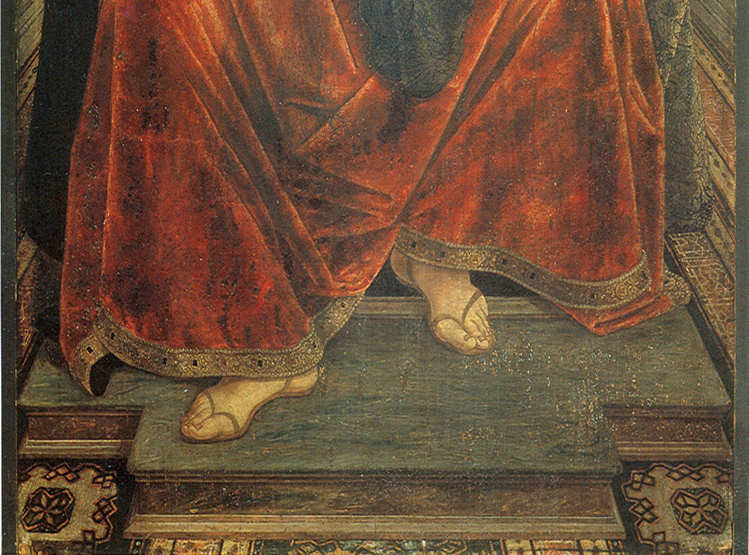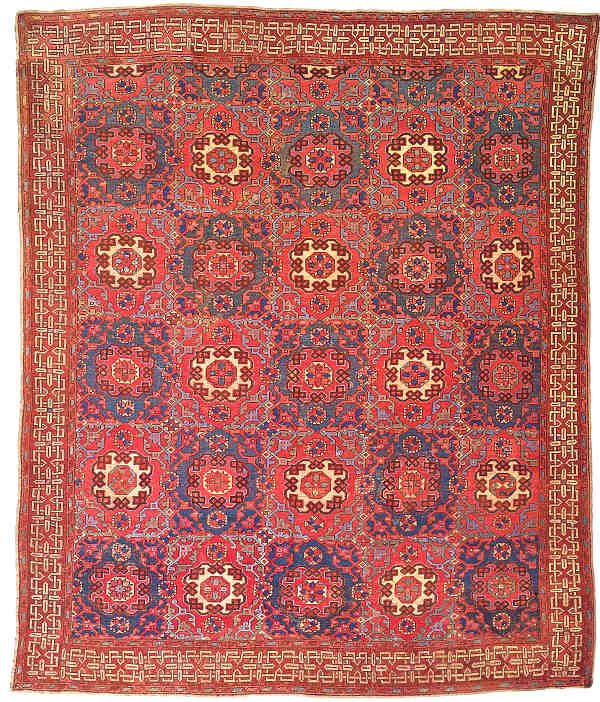Hi Pierre,
There are seven paintings in this allegoric series symbolizing the Virtues. Six are from Piero del Pollaiolo. All of them but one (the “Charity”) have the same floor decoration. The “Charity” however has a slightly different one, more carpet-like but again with multiple Kufic borders:

More exactly like a “small pattern Holbein rug” as seen in your essay on “Geometric Rugs in Early Renaissance Paintings”:

Now, if you want my opinion, those floors are sort of “A painter's invention”.
Well, not
exactly inventions, though: I think the artist used
real elements of a “small pattern Holbein rug” in the same way he used virtual architectonic elements (I say virtual because I exclude that the niches surrounding the women were real) to build up his compositions.
Regards,
Filiberto